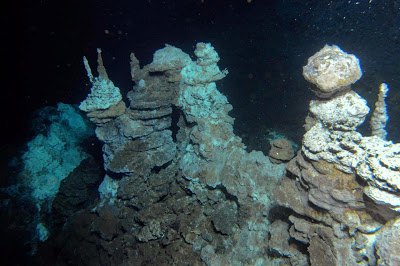
New complex microorganisms discovered as closest relatives of complex organisms
Archaea belong together with Bacteria to the first organisms that emerged on Earth. These microorganisms existed hundreds of millions of years before the more complex cell structures of Eukaryotes developed that gave rise to macroscopic life, i.e. plants and animals. An international team of researchers from Uppsala (Sweden), Bergen (Norway) and Vienna (Austria), has found a novel group of Archaea in deep ocean sediments, who are the closest direct relatives of the eukaryotic lineage. Their genome shows an unexpected similarity to those of Eukaryotes. The results of this study appear in the current issue of the journal “Nature”.
How did the first complex eukaryotic cells with their organelles develop from simple prokaryotes, i.e. bacteria or archaea? This is a highly debated topic in evolutionary research but the question remains largely unresolved. Genomic research has shown that the organelles delivering energy in eukaryotic cells stem from an early bacterial symbiont. Since Archaea have also played an important role in the evolution of eukaryotes, current models suggested, that a primordial Archaeon might have engulfed a bacterium and in this event transformed into a complex eukaryotic cell. “With the discovery of Lokiarchaeota a missing link in this scenario has been found”, says Christa Schleper from the University of Vienna.
Surprises from the genome
In phylogenetic trees Lokiarchaeota (named after the Norwegian god Loki) form a direct sister group to Eukaryotes. This means that the ancestors of Eukaryotes emerged indeed directly from Archaea and do not form a separate domain in the tree of life. In addition, the genome of Lokiarchaeota reveals an unexpected complexity: It contains the genetic information for some proteins that were earlier only known from eukaryotes. Some of these proteins are responsible for membrane remodeling and for the formation of a cytoskeleton that determines the shape of a eukaryotic cell. “Exactly those features were needed by the primordial cell or primordial Archaeon to engulf a bacterium in the early stages of eukaryotic evolution”, says Anja Spang, one of the first authors of this study, who recently completed her PhD at the University of Vienna and now analysed the Loki genome in the group of Thijs Ettema in Uppsala.
The last common ancestor
“It is as if we had just discovered the primates i.e. the next living relatives of humans, who also give us interesting insights into the nature of the last common ancestor. However, the common ancestor of Lokiarchaeota and Eukaryotes dates much further back, approximately two billion years”, says Christa Schleper, “We are curious to analyse the life style and cellular structure of Lokiarchaeota, as it might give even more exciting insights into early evolution.”
Reference:
Anja Spang, Jimmy H. Saw, Steffen L. Jørgensen, Katarzyna Zaremba-Niedzwiedzka, Joran Martijn, Anders E. Lind, Roel van Eijk ,Christa Schleper, Lionel Guy and Thijs J.G. Ettema: Complex archaea that bridge the gap between prokaryotes and eukaryotes. In: Nature 2015
DOI: 10.1038/nature14447
Note : The above story is based on materials provided by University of Vienna.










